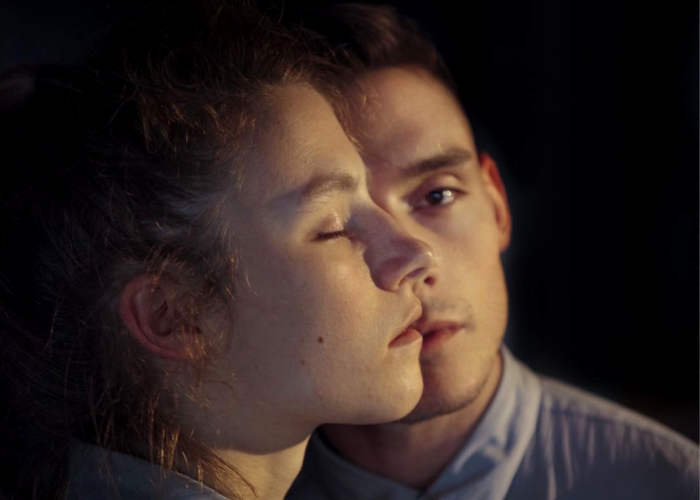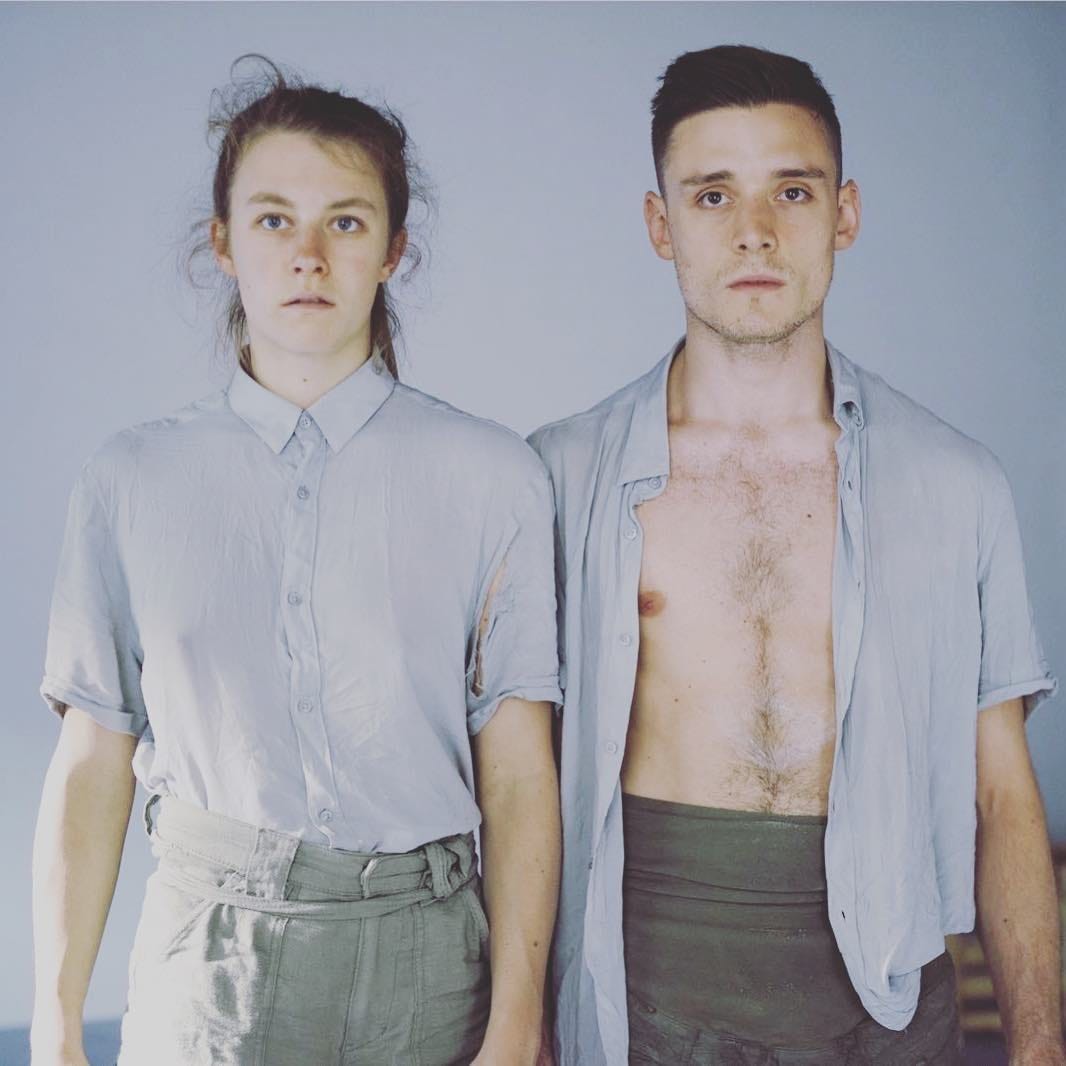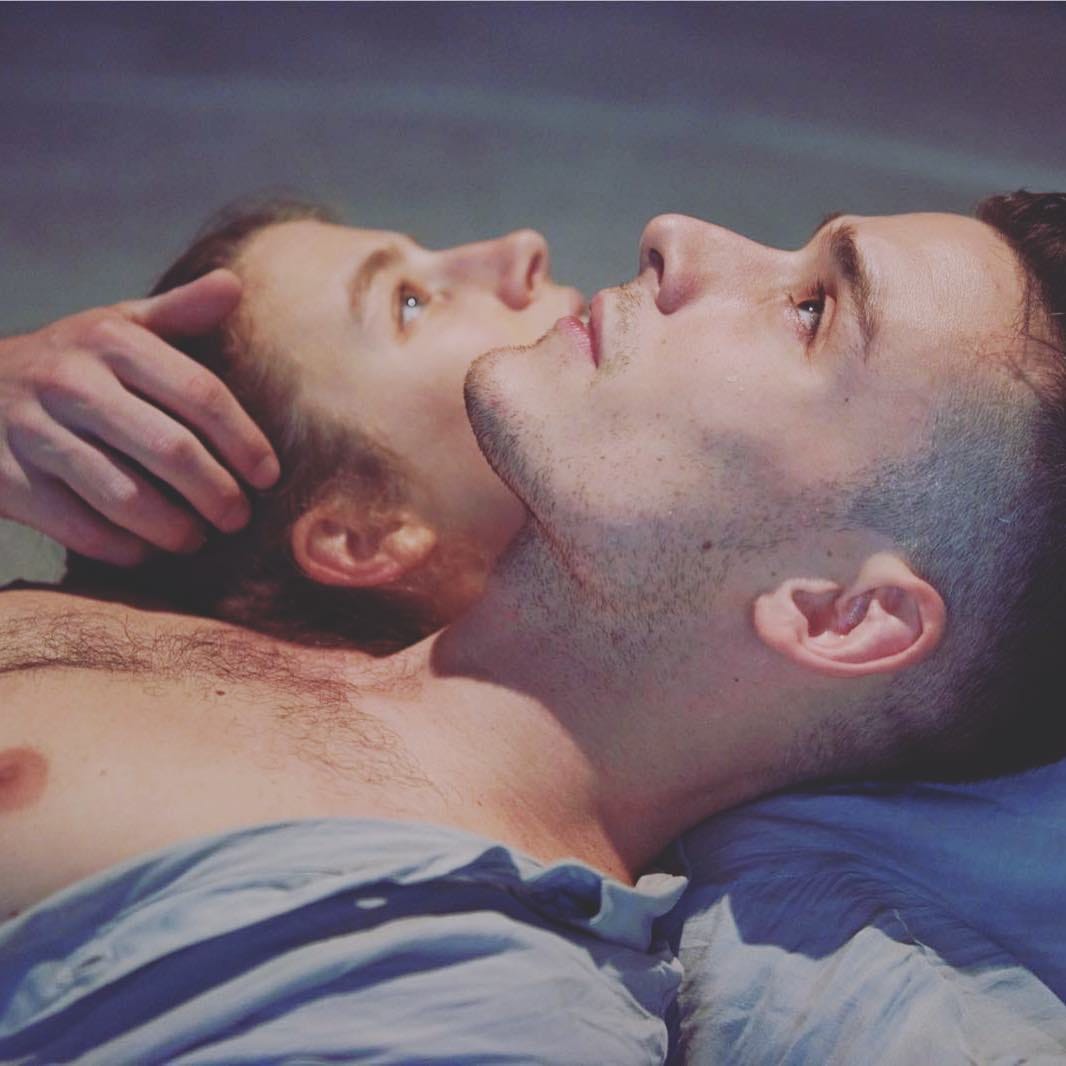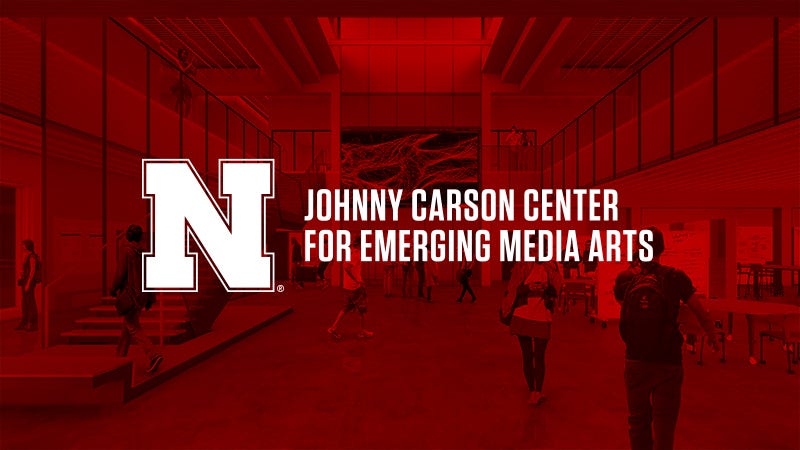
A conversation with dance-theatre show’s co-creators, Tony Bordonaro and Ingrid Kapteyn
CAMPFIRE, conceived by two performers who met as cast members in Sleep No More, places audiences in a post-apocalypse scenario where squatters in an office construction site are refugees in a city where resources are scarce. The show’s co-creators, Tony Bordonaro and Ingrid Kapteyn, met while dancing in Sleep No More Shanghai; the show CAMPFIRE was first performed in China in June 2017 and will appear at the Tank in Manhattan in January 2019 for a limited run.
We caught up Tony and Ingrid over email to ask them some questions about the experience.

No Proscenium: Could you tell us a little about yourself and your background in the immersive arts?
Tony Bordonaro (TB): Ingrid [Kapteyn] and I met performing in Sleep No More NYC. Our friendship quickly developed. The desire to make work that engages audiences in more active ways led us to talk about collaborating together as creators.
Ingrid Kapteyn (IK): I love performing in close proximity to audiences. I was full-time in Sleep No More NYC, where I met Tony, for about a year after graduating from the Dance Division at Juilliard. From there I went on to work for a bunch of different choreographers in traditional and nontraditional venues — from The Metropolitan Opera to an empty pool on Governors Island — and to cofound a collective called HEWMAN with a mission to bring dance where it’s never been before. So far, we have mounted three evening-length installations in nine offbeat locations, including a Harlem gallery, a midtown tenement, a Williamsburg garage, a Soho loft, a Lower East Side rooftop, and a Bushwick photography studio. In every venue, the audience is free to move around the dancers at will.
When performers and viewers are mixed together in the same space, our similarities become more evident than our differences. The connections between us become more visceral.
Building a new version of Sleep No More in Shanghai in 2016 was a life-changing chance to exercise those potentials with a new population, in a completely foreign culture.
NP: What, in a nutshell, is this project about?
TB: This project is about empathy and compassion and overall what it means to be human. In CAMPFIRE, this question — although old as time itself — is explored in a new way through physical storytelling and a shared multi-sensory experience.
IK: I am a shameless sucker for stories like The Hunger Games and The Walking Dead, where the logistics of normal life disappear and every day is a matter of surviving until tomorrow. Even in fiction, those high stakes show the guts of what humans care about, and don’t. Tony and I wanted to explore those guts through the performance form we know best. The stripped-down silence of movement can be one of the most simple and articulate ways to tell a story.
NP: How did the project come about? What inspired you to make this experience?
IK: We were both performing nightly in Sleep No More Shanghai, and we’d been there long enough to feel in the swing of our show routines and hyper-aware of how curious the audiences were about that kind of unconventional theatrical experience. Sleep No More Shanghai was sold out every night.
Where New York is supersaturated, Shanghai is ravenous. We started itching to use our creative muscles for audiences outside of the show.
TB: Yes, the audiences in Shanghai wanted opportunities to lose themselves in live performances, and immersive theatre does that best. One day while we were wandering through Shanghai’s contemporary Power Station of Art museum and discussing art, I saw a futuristic exhibition of a spacecraft. I said to Ingrid, “What are you inspired to make?” She said, “Something about empathy.” At the time I was watching many sci-fi movies and what I loved most was the way the genre was able to ask provocative questions about human nature. We teamed up with Sarah Ali, the producer of a cultural event platform called Beyond the Bund, and began looking at spaces in Shanghai where we could set our post-apocalyptic tale. We were fascinated by the up-and-coming nature of the city. Every day we commuted around town, there seemed to be more construction sites. The city continues to grow at rapid speeds and some construction sites sit unfinished, waiting for the next stages of development. We wanted to find a place that was unfinished, overlooked, or perhaps forgotten. The relationship of our two characters, their desires and objectives, became clear after months of late night rehearsals and existential discussions about whether empathy and compassion are innate characteristics of human beings or learned behaviors.
NP: How has your experience performing in Sleep No More influenced you artistically?
IK: The irresistible genius of Punchdrunk’s immersive theatre brand has changed the entire landscape of dance and dance-viewing. I feel unspeakably lucky and grateful to have learned the form from the inside out. The immediacy and the thrill of performing in Sleep No More is like nothing else in the world. I can only hope my bones are worthy to carry that legacy forward. The format of Sleep No More also makes me curious to explore other possibilities. When audiences wear masks, as they do in Punchdrunk work, the power dynamic is obvious: these are the superhuman performers. They have the right of way. These are the audience members. They are anonymous spectators.

CAMPFIRE gave us a chance to create a more intimate relationship between performers and viewers. Our audiences do not wear masks to separate them from us. We want to discover what happens when they are part of our scene.
TB: Our experiences with Sleep No More have impacted our work as creators immensely. As dance artists we believe the movement of the body is highly expressive, and that’s why we choose to tell stories physically. The audience is always the primary focus of the experience. We ask ourselves how we can deliver images (and in this case smells) that allow the audience to bring their own perceptions and backgrounds into the works we create. They are agents navigating the story through their own minds. Our hope is that they will get lost in a world that is entirely new yet unmistakably familiar.
NP: As this work is being developed what influences did the team find itself coming back to?
IK: We watch sci-fi fight sequences. We think about our day at The Power Station of Art. We read the news and feel the world’s desperation for the healing power of empathy. We marvel at the years of our friendship and how we could not have pictured these intense moments of collaboration from our corner of the Sleep No More dressing room in New York five years ago.
NP: How is the audience incorporated into the work? How are you designing around audience agency, consent, and safety?
IK: CAMPFIRE engages performers and audiences in an intimate collective experience akin to gathering around a campfire. Performers may offer audience members gentle directional guidance and request simple assistance with prop objects. We do not want to force anything on anyone, only to invite people in to share our experience.
TB: Additionally, putting CAMPFIRE in a more traditional theater at The Tank made us wonder how we could transform the space for our audience to bring them closer to the story, closer to us. We decided that using scent could elicit an immediate emotional response. In the New York version of CAMPFIRE, we are using three different scent sculptures (custom-made scents) that evolve throughout the duration of the show. Our hope is that involving audiences’ sense of smell will take them further into the story than visual and auditory information would alone.

NP: How have audiences reacted so far?
IK: Our audiences in Shanghai were exceptionally focused and generous. They tended to be that way all the time because the experience of seeing live contemporary dance was such a novelty to them. They are not jaded and overexposed like many dance-goers in NYC understandably are. We hope that CAMPFIRE can offer something fresh to anyone, no matter what city they’re from.
NP: Who is the ideal audience member for this show?
IK: I imagine that someone who is more curious to share an experience than define it, more open to absorb stories than to pinpoint genres, will be receptive to CAMPFIRE.
NP: What do you hope participants take away from the experience?
IK: I hope that audience members will leave CAMPFIRE feeling a little closer to each other than they did when they arrived.
CAMPFIRE will play January 4–5 at the Tank in NYC. Tickets are $20.
NoPro is a labor of love made possible by our generous Patreon backers. Join them today!
This month we’d also like to thank The Johnny Carson Center for Emerging Media Arts for sponsoring our features.

In addition to the No Proscenium web site, our podcast, and our newsletters, you can find NoPro on Twitter, Facebook, YouTube, Instagram, in the Facebook community Everything Immersive, and on our Slack forum.





















Discussion